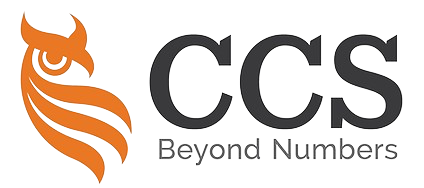Introduction
Since its founding in 2001, the International Accounting Standards Board (IASB) has had a profound impact on the global landscape of financial reporting for companies.
But it was the International Accounting Standards Committee (IASC), during its 27 years of existence from 1973 to 2000, that laid the groundwork for the International Accounting Standards Board (IASB).
自2001年成立以来,国际会计准则理事会已经对公司财务报告的全球格局产生了深远的影响。
但是,正是国际会计准则委员会(IASC)在其1973年至2000年的27年存在期间,为国际会计准则理事会(IASB)奠定了基础。
International Accounting Standards Committee (IASC) | 国际会计准则委员会
After the end of World War II, each country developed its own set of Generally Accepted Accounting Principles (GAAP, the name used in the United States), sometimes known as the proper accounting practice.
The International Accounting Standards Committee (IASC) was established in 1973 with the objective of developing and issuing international accounting standards and promoting international convergence of national accounting practices.
国际会计准则委员会(IASC)成立于1973年,主要的目的是为了制定和发布国际会计准则,以促进各国会计实务的国际趋同。
从1973年成立到2001年解散,它制定了一套国际会计准则(IAS),并逐渐在世界各国获得了一定程度的认可。

The Evolution of the IASC into the IASB | IASC 演变为IASB 的过程
During the period from its founding in 1973 to its dissolution in 2001, the IASC developed a set of International Accounting Standards (IAS) that gradually acquired a degree of acceptance in countries around the world.
In their consolidated financial statements, a number of European multinational companies started using International Accounting Standards (IAS) rather than their national generally accepted accounting principles (GAAP) between the years 1987 and 2000.
Corporations such as Nestle, Holderbank/Holcim, Roche, CibaGeigy/Novartis, and UBS were among those involved, as well as companies from Germany such as Schering, Heidelberger Zement, Bayer, Hoechst, and Deutsche Bank.
CPC International, Salomon Inc., and Microsoft are three of the biggest companies in the United States that have begun to confirm that their financial statements correspond to IAS.
In May 2000, the IASC was reorganised. A new IASB Constitution took effect on 1 July 2000. The standards-setting body was renamed the International Accounting Standards Board (IASB). It would operate under a new International Accounting Standards Committee Foundation (IASCF, now the IFRS Foundation).
The IASB is responsible for the research and development of accounting standards. This reorganisation has changed the IASC from being, in a sense, the ‘coordinator’ of national accounting standards to being the ‘setter’ of global accounting standards.
从 1973 年成立到 2001 年解散这段期间,IASC 制定了一套国际会计准则(IAS),并逐渐在世界各国获得了一定程度的认可。
在1987年至2000年期间,一些欧洲跨国公司在其合并财务报表中开始使用国际会计准则(IAS),而不是其国家公认的会计原则(GAAP)。
雀巢、Holderbank/Holcim、罗氏公司 [(Roche)是以研究为导向的健康事业公司,创立于1896年,总部位于瑞士巴塞尔。 罗氏两大核心业务:药品和诊断为人类健康提供了预防、诊断以及治疗的创新产品和服务,从而提高了人类的健康水准和生活品质]、CibaGeigy/Novartis [诺华公司成立于1996年,由位于巴赛尔的两家化学品及制药公司“汽巴-嘉基”(Ciba-Geigy)和“山德士”(Sandoz)合并而成。] 和UBS等公司,以及德国的Schering [先灵葆雅(Schering-Plough)是一家总部位于美国新泽西州凯尼尔沃思的制药公司,以生产开瑞坦等抗过敏药物而闻名。]、Heidelberger Zement、Bayer、Hoechst和德意志银行等公司也参与其中。
CPC国际公司、所罗门公司和微软公司是美国最大的三家公司,它们已经开始确认其财务报表与国际会计准则相一致。
2000年5月,IASC 进行了改组。新的国际会计准则委员会章程于2000年7月1日生效,该准则制定机构被重新命名为国际会计准则委员会(IASB)。它将在一个新的国际会计准则委员会基金会(IASCF,现在的IFRS基金会)下运作。
IASB 负责会计准则的研究和开发,这一重组使 IASC 从某种意义上说,从国家会计准则的 “协调者 “变成了全球会计准则的 “制定者”。

Conceptual Framework | 概念框架
In April 1989, the IASC Board approved a document entitled “A Framework for the Presentation of Financial Statements“, which was issued in July of the same year.
The Conceptual Framework for Financial Reporting (the “Conceptual Framework”) :
- is a basic document that sets objectives and the concepts for general purpose financial reporting.
- has played an important role in guiding the development of international standards and the evaluation of existing standards.
In 2001 the IASC reorganised itself to form the new International Accounting Standards Board, the IASB, which has been working on updating the Conceptual Framework and developing global accounting standards since its inception.
The first phase of the Conceptual Framework for Financial Reporting was completed in September 2010, while the relevant sections of the Financial Reporting Framework published in 1989 will be replaced, however, it was a bit unfinished as a few concepts and chapters were missing.
The newest and completed Framework published in 2018 comprises 8 chapters.
The Framework addresses:
- the objective of general-purpose financial reporting
- qualitative characteristics of useful financial information
- financial statements and the reporting entity
- the elements of financial statements
- recognition and derecognition
- measurement
- presentation and disclosure
- concepts of capital and capital maintenance
1989年4月,国际会计准则委员会(IASC)批准了一份题为《财务报表编报框架》的文件,该文件于同年7月发布。
财务报告的概念框架(”概念框架”):
- 是一份基本文件,规定了一般通用财务报告的目标和概念;
- 在指导国际标准的制定和现有标准的评估方面发挥了重要作用。
2001年,国际会计准则委员会(IASC)改组为新的国际会计准则理事会,即 IASB,该理事会自成立以来,一直致力于修订概念框架 (Conceptual Framework)和制定全球会计标准。
财务报告的概念框架的第一阶段已于2010年9月完成,而1989年出版的财务报告框架的相关部分将被取代,然而,它依然有点不够完善,因为缺少一些概念和章节。
2018年出版的最新完成的《框架》包括8个章节。
该框架涉及:
- 一般目的财务报告的目标
- 有用财务信息的质量特征
- 财务报表和报告主体
- 财务报表的要素
- 确认和终止确认
- 计量
- 列报和披露
- 资本和资本保全的概念

Is the Framework equivalent to the Standard? | 该框架是否等同于标准?
Allow me to elaborate on one particular point:
- The framework itself is NOT a Standard.
Therefore, if you want to decide on the financial reporting of a certain transaction, you need to explore a suitable standard, which could be IFRS or IAS [MFRS in Malaysia].
It is possible that there will be instances when the rules in that IFRS or IAS [MFRS] standard will be in direct contradiction to what is stated in the Framework.
In this particular scenario, we should use the standard rather than the Framework.
请允许我先说明一个特别重要的事情:
- 该框架本身并不是一个标准
因此,如果你想决定某项交易的财务报告,你需要寻找一个合适的标准,而这个合适的标准可以是 IFRS 或 IAS [马来西亚 – MFRS/MPERS]。
然而,不排 IFRS 或 IAS [MFRS / MPERS] 标准中的规则,可能在某些情况下会与框架中的规定直接相抵触。
在这种特殊情况下,我们应该使用该准则而不是该框架。
When is the appropriate time to use the Framework? | 什么时候是使用该框架的适当时机?
When there are no specific rules for your transaction and you need to build your accounting policy, you should look to the Framework as a starting point because you cannot deviate from its fundamental principles and definitions.
当你需要建立你的会计政策时,而你的交易没有具体的规定,此时你应该把《框架》作为一个起点,因为你不能偏离其基本原则和定义。







